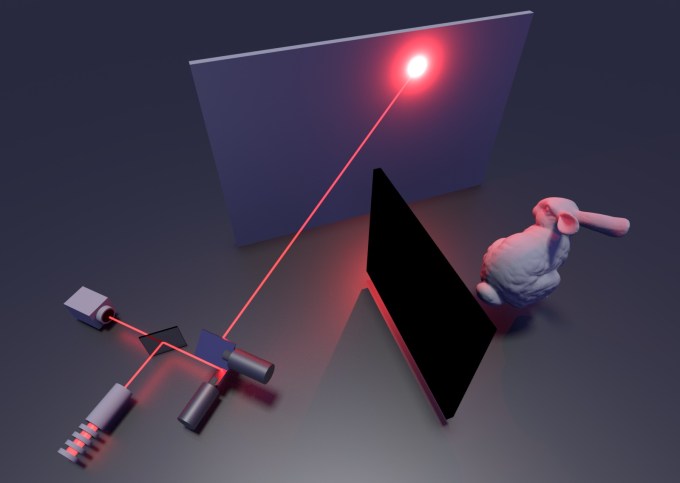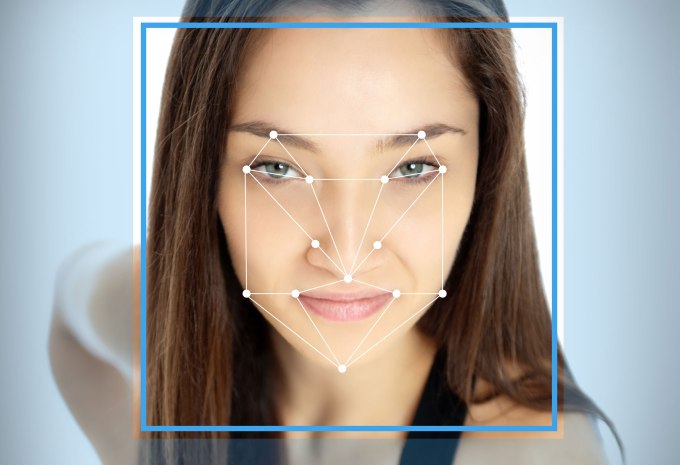As humans, we’ve gotten pretty good at shaping the world around us. We can choose the molecular design of our fruits and vegetables, travel faster and farther and stave off life-threatening diseases with personalized medical care. However, what continues to elude our molding grasp is the airy notion of “time” — how to see further […]
View More Teaching computers to plan for the futureCategory: Computer Vision
AI edges closer to understanding 3D space the way we do
If I show you single picture of a room, you can tell me right away that there’s a table with a chair in front of it, they’re probably about the same size, about this far from each other, with the walls this far away — enough to draw a rough map of the room. Computer vision systems don’t have this intuitive understanding of space, but the latest research from DeepMind brings them closer than ever before.
View More AI edges closer to understanding 3D space the way we doHow Facebook’s new 3D photos work
In May, Facebook teased a new feature called 3D photos, and it’s just what it sounds like. But beyond a short video and the name, little was said about it. But the company’s computational photography team has just published the research behind how the feature feature works and, having tried it myself, I can attest that the results are really quite compelling.
View More How Facebook’s new 3D photos work‘SmartLens’ app created by a high schooler is a step towards all-purpose visual search
A couple years ago I was eagerly expectant of an app that would identify anything you pointed it at. Turns out the problem was much harder than anyone expected — but that didn’t stop high school senior Michael Royzen from trying. His app, SmartLens, attempts to solve the problem of seeing something and wanting to identify and learn more about it — with mixed success, to be sure, but it’s something I don’t mind having in my pocket.
View More ‘SmartLens’ app created by a high schooler is a step towards all-purpose visual searchWant to fool a computer vision system? Just tweak some colors
Research into machine learning and the interesting AI models created as a consequence are popular topics these days. But there’s a sort of shadow world of scientists working to undermine these systems — not to show they’re worthless but to shore up their weaknesses. A new paper demonstrates this by showing how vulnerable image recognition models are to the simplest color manipulations of the pictures they’re meant to identify.
View More Want to fool a computer vision system? Just tweak some colorsWho’s a good AI? Dog-based data creates a canine machine learning system
We’ve trained machine learning systems to identify objects, navigate streets, and recognize facial expressions, but as difficult as they may be, they don’t even touch the level of sophistication required to simulate, for example, a dog. Well, this project aims to do just that — in a very limited way of course. By observing the behavior of A Very Good Girl, this AI learned the rudiments of how to act like a dog.
View More Who’s a good AI? Dog-based data creates a canine machine learning systemShould AI researchers kill people?
AI research is increasingly being used by militaries around the world for offensive and defensive applications. This past week, groups of AI researchers began to fight back against two separate programs located halfway around the world from each other, generating tough questions about just how much engineers can affect the future uses of these technologies. […]
View More Should AI researchers kill people?Here’s how Uber’s self-driving cars are supposed to detect pedestrians
A self-driving vehicle made by Uber has struck and killed a pedestrian. It’s the first such incident and will certainly be scrutinized like no other autonomous vehicle interaction in the past. But on the face of it it’s hard to understand how, short of a total system failure, this could happen when the entire car has essentially been designed around preventing exactly this situation from occurring.
View More Here’s how Uber’s self-driving cars are supposed to detect pedestriansGrokStyle’s visual search tech makes it into IKEA’s Place AR app
GrokStyle’s simple concept of “point your camera at a chair (or lamp, or table…) and find others like it for sale” attracted $2 million in funding last year, and the company has been putting that cash to work. And remarkably for a company trying to break into the home furnishing market, it landed furniture goliath IKEA as its first real customer; GrokStyle’s point-and-search functionality is being added to the IKEA Place AR app.
View More GrokStyle’s visual search tech makes it into IKEA’s Place AR appAutonomous cars could peep around corners via bouncing laser
 Autonomous cars gather up tons of data about the world around them, but even the best computer vision systems can’t see through brick and mortar. But by carefully monitoring the reflected light of a laser bouncing off a nearby surface, they might be able to see around corners — that’s the idea behind recently published research from Stanford engineers. Read More
Autonomous cars gather up tons of data about the world around them, but even the best computer vision systems can’t see through brick and mortar. But by carefully monitoring the reflected light of a laser bouncing off a nearby surface, they might be able to see around corners — that’s the idea behind recently published research from Stanford engineers. Read More
Microsoft advances several of its hosted artificial intelligence algorithms
 Microsoft Cognitive Services is home to the company’s hosted artificial intelligence algorithms. Today, the company announced advances to several Cognitive Services tools including Microsoft Custom Vision Service, the Face API and Bing Entity Search . Joseph Sirosh, who leads the Microsoft’s cloud AI efforts, defined Microsoft Cognitive Services in a company blog post announcing… Read More
Microsoft Cognitive Services is home to the company’s hosted artificial intelligence algorithms. Today, the company announced advances to several Cognitive Services tools including Microsoft Custom Vision Service, the Face API and Bing Entity Search . Joseph Sirosh, who leads the Microsoft’s cloud AI efforts, defined Microsoft Cognitive Services in a company blog post announcing… Read More
Think fast – this system watches you answer questions to make sure you’re human
 The machines are getting smarter and facial recognition may not be enough to tell you’re a human. Machines can make faces too but they’re not so good at answering questions with them. That could lead to a new, more effective type of CAPTCHA. Read More
The machines are getting smarter and facial recognition may not be enough to tell you’re a human. Machines can make faces too but they’re not so good at answering questions with them. That could lead to a new, more effective type of CAPTCHA. Read More